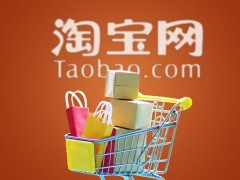What is the difference between Amazon's off-season and peak season?
亚马逊的淡季和旺季是指在销售和订单量上出现明显差异的两个时期。
以下是它们的主要区别:
1. 销售量:旺季是指销售量较高的时期,通常是在特定的节日季节,如圣诞节、感恩节等。在这段时间内,消费者购物需求旺盛,订单量大幅增加。而淡季则是指销售量较低的时期,相对较少的订单会导致销售额下降。
2. 竞争情况:在旺季,由于消费者需求增加,卖家之间的竞争也会更加激烈。卖家需要采取一些策略来提高产品的曝光度和吸引力,以吸引更多的买家。而在淡季,由于订单量较少,竞争相对较小,卖家可能需要采取一些促销措施来刺激销售。
3. 物流和库存管理:在旺季,由于订单量激增,物流和库存管理变得更加重要。卖家需要确保及时发货和库存充足,以满足消费者的需求。而在淡季,由于订单量较少,物流和库存管理的压力相对较小。
4. 价格波动:在旺季,由于供需关系的变化,某些产品的价格可能会上涨。消费者在这个时期更愿意购买,卖家可以根据市场需求调整价格以获取更高的利润。而在淡季,由于销售量较低,卖家可能需要降低价格来促进销售。
了解淡季和旺季的区别对卖家来说很重要,可以帮助他们制定合适的销售策略和管理库存。在旺季,卖家可以加大推广力度,提高产品的曝光度;在淡季,卖家可以考虑进行促销活动,清理库存并吸引买家。
Professional answer
Amazon's off-season and peak season refer to two periods with significant differences in sales and order volume.
Here are their main differences:
1. Sales volume: Peak season refers to a period of high sales volume, usually during specific holiday seasons such as Christmas, Thanksgiving, etc. During this period, consumer shopping demand is strong and the order volume increases significantly. The off-season refers to a period of low sales volume, and relatively few orders will lead to a decline in sales.
2. Competition: During the peak season, due to the increase in consumer demand, the competition between sellers will also be more intense. Sellers need to adopt some strategies to increase the exposure and attractiveness of their products to attract more buyers. While in the off-season, due to the low order volume and relatively less competition, sellers may need to take some promotional measures to stimulate sales.
3. Logistics and inventory management: During the peak season, due to the surge in order volume, logistics and inventory management become more important. Sellers need to ensure timely shipment and sufficient inventory to meet consumer demand. In the off-season, due to the smaller order volume, the pressure on logistics and inventory management is relatively small.
4. Price fluctuations: In the peak season, the prices of some products may rise due to changes in supply and demand. Consumers are more willing to buy during this period, and sellers can adjust prices according to market demand to obtain higher profits. In the off-season, due to the lower sales volume, sellers may need to lower prices to promote sales.
It is important for sellers to understand the difference between the off-season and the peak season, which can help them formulate appropriate sales strategies and manage inventory. In the peak season, sellers can increase promotion efforts to increase product exposure; in the off-season, sellers can consider conducting promotional activities to clear inventory and attract buyers.
Similar Q&A
recommend How to view sales of several months on Amazon?
E-c News Continuously pushing e-commerce knowledge to you








Latest Q&A More
-
Do I need a trademark to open a franchise store on Pinduoduo to sell books?
#Pinduoduo#
-
How to withdraw from a Pinduoduo store
#Pinduoduo#
-
How to withdraw from Pinduoduo merchants
#Pinduoduo#
-
How to pay fees when closing a Pinduoduo store
#Pinduoduo#
-
How to withdraw from Pinduoduo
#Pinduoduo#
-
Which store on Pinduoduo is authentic?
#Pinduoduo#
-
Which stores on Pinduoduo can buy genuine products?
#Pinduoduo#
-
How to check the store under Pinduoduo
#Pinduoduo#
-
How to receive Pinduoduo online game products
#Pinduoduo#
-
How to sell the electronic version on Pinduoduo
#Pinduoduo#
E-c News 2025-08-13 19:33:16

- African netizens use China Africa cross-border e-commerce platform for online shopping
- how is the new seller of cross-border e-commerce doing?
- how can cross-border e-commerce Amazon sell on Amazon platform without goods?
- Amazon store opening process and cost analysis!
- Amazon plans to expand its pharmacy business on a large scale and will add same day delivery service
